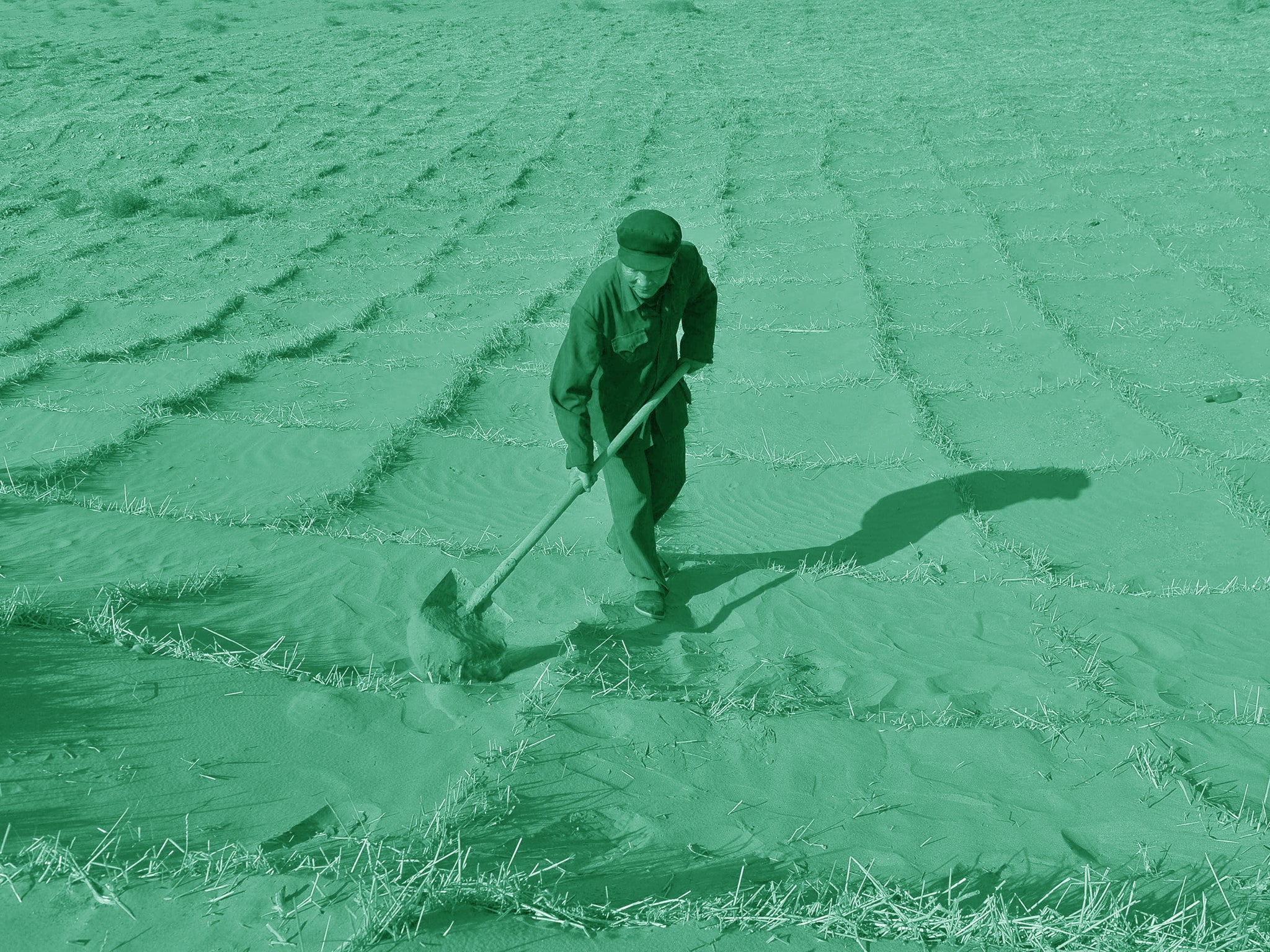What is desertification?
- What is desertification?
- Where is it happening?
- Will it get worse?
- How can it be reversed or prevented?

Climate change is causing soil to rapidly lose its ability to grow food — with severe consequences for humanity
What is desertification?
The IPCC defines desertification as land degradation in arid, semi-arid, and dry sub-humid areas resulting from many factors, including climatic variations and human activities.
Land degradation is caused by direct or indirect human-induced processes including man-made climate change, expressed as long-term reduction or loss of biological productivity, ecological integrity, or value to humans.
In short, desertification is the permanent degradation of land that was once arable.
While land degradation can be a natural process, the pace of desertification has accelerated rapidly to reach 30 to 35 times the historical rate, according to the United Nations.
The causes of degradation include urban sprawl, mining, farming, and agriculture because of the clearing of trees and other vegetation, while crops deplete nutrients in the soil. The increased risk of drought brought about by climate change also adds to the issue.
Desertification has severe social and economic consequences for human populations.
Where is it happening?
The IPCC says the extent of desertification on a global scale is difficult to estimate, but the regional data is alarming.
It is estimated that 46 of the 54 countries in Africa are vulnerable to desertification and desertification is currently affecting 38 of 48 countries in Asia.
Drylands cover 33.8% of northern Mediterranean countries: approximately 69% of Spain, 66% of Cyprus, and between 16% and 62% in Greece, Portugal, Italy and France. The European Environment Agency (EEA) indicated that 8% of the territory of the European Union (mostly in Bulgaria, Cyprus, Greece, Italy, Romania, Spain and Portugal), had a ‘very high’ and ‘high sensitivity’ to desertification.
Drylands are heavily distributed among the world’s poorest countries, causing loss of biodiversity by worsening the living conditions of many species, food insecurity due to crop failure or reduced yields, and loss of vegetation and food.
Will it get worse?
More than 75 per cent of Earth’s land area is already degraded, according to the European Commission’s World Atlas of Desertification, and more than 90 per cent could become degraded by 2050.
The commission’s Joint Research Centre found that a total area half of the size of the European Union (1.61 million square miles) is degraded annually, with Africa and Asia being the hardest hit.
How can it be reversed or prevented?
One way of mitigating land degradation is by improving land-use planning, including the management of water resources, livestock, and agricultural activities.
No-till (also called zero tillage) technologies could minimise soil disturbance, reduce the combustion of fossil fuels and increase soil organic matter.
Vegetation plays a key role in protecting the soil from wind and water erosion, by building barriers and stabilising dunes. Preserving it would stem the tide of desertification
Organic farming and sustainable practices, such as rotational crops and combining trees with farming (known as agroforestry), which prevent soil erosion and drought.
Meanwhile, reforestation regenerate vegetation cover and generates biodiversity.
Join our commenting forum
Join thought-provoking conversations, follow other Independent readers and see their replies
Comments
Bookmark popover
Removed from bookmarks